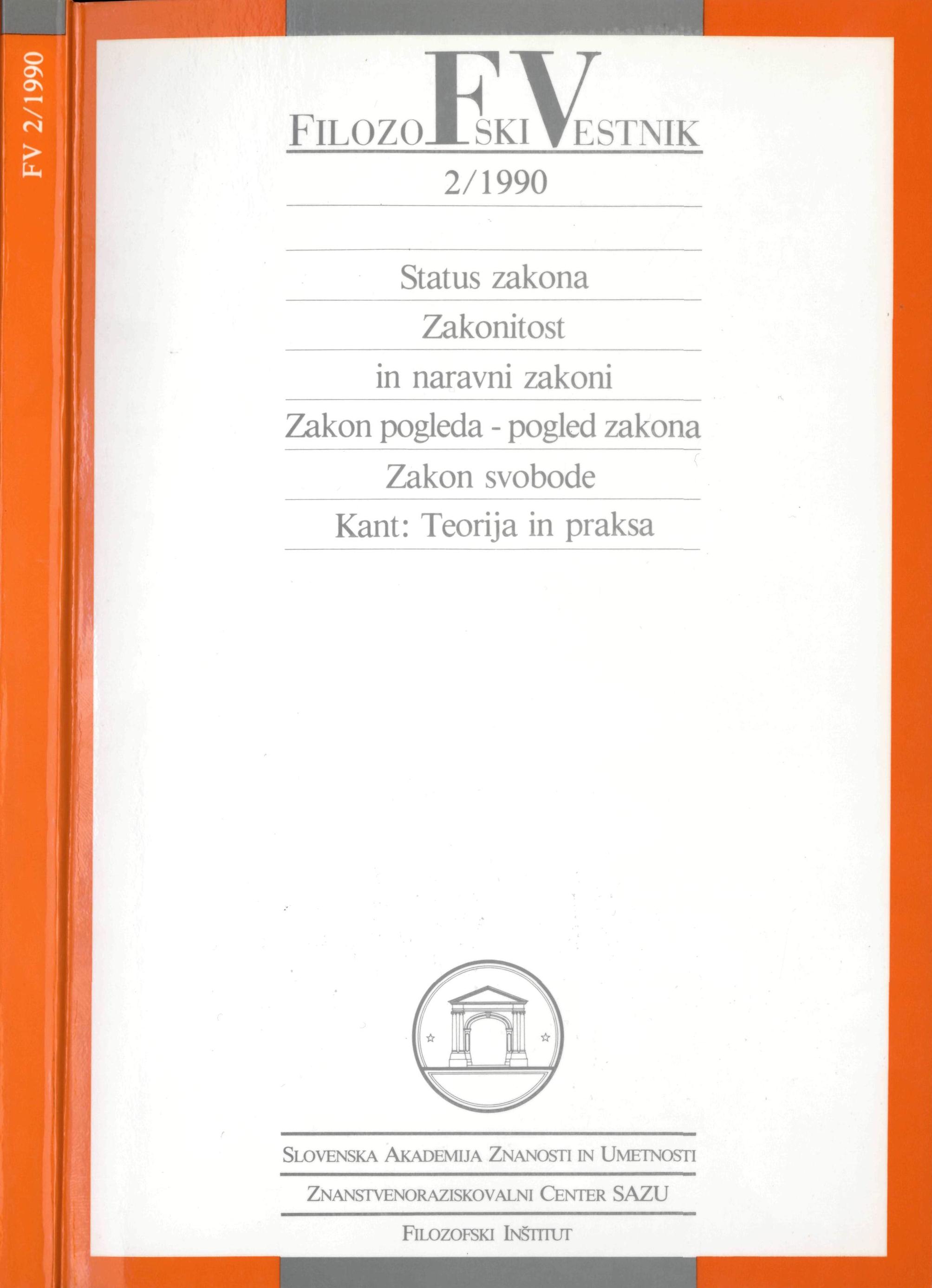Zakon in vzročnost
Povzetek
Ob problemu dispozicijskih lastnosti je v prispevku ontološkemu tipu časovnih izsekov, ki ji je zavezana Humova zavrnitev predstave nujne zveze, zoperstavljen tip ontologije, katere zadnje entitete so predmeti, ki vztrajajo in se spreminjajo skozi čas. Ta ontološka shema ima svoj kore-lat v pojasnjevanju s pomočjo narave predmeta; ker pa je le-ta specificirana z odzivi, nujnimi, da bi bil nekaj predmet določene vrste, se odnos med tem, kar je in njegovo vzročno učinkovitostjo izkaže za analitičnega. Tako prejme predstava nujne zveze tako ontološko kot epistemološko utemeljitev. Na koncu je nakazanih nekaj presenetljivih nehumovskih implikacij: navkljub nujni uveriženosti naravnih dogodkov ni mogoče z vso zanesljivostjo napovedati naslednjega dogodka, saj brez podatkov o tem dogodku samem ne moremo dokončno vedeti, za kakšne stvari gre; v vseh možnih svetovih vladajo enaki naravni zakoni, katerih sprememba bi imela za posledico razpad našega sveta; obstaja en sam možni svet, edina težava je v tem, da ne moremo vedeti, kateri.Prenosi
Podatki o prenosih še niso na voljo.
Prenosi
Objavljeno
2016-01-17
Kako citirati
Kohe, Z. (2016). Zakon in vzročnost. Filozofski Vestnik, 11(2). Pridobljeno od https://ojs.zrc-sazu.si/filozofski-vestnik/article/view/3712
Številka
Rubrike
Zakonitost in naravni zakoni
Licenca
Avtorji jamčijo, da je delo njihova avtorska stvaritev, da v njem niso kršene avtorske pravice tretjih oseb ali kake druge pravice. V primeru zahtevkov tretjih oseb se avtorji zavezujejo, da bodo varovali interese založnika ter da bodo povrnili morebitno škodo.
Podrobneje v rubriki: Prispevki





